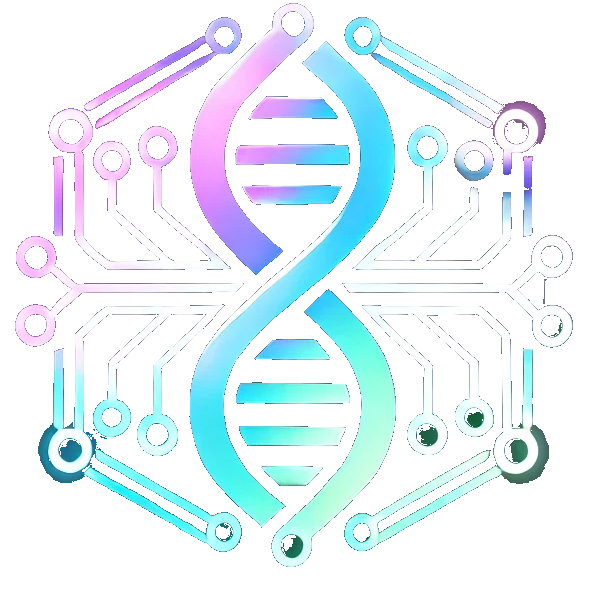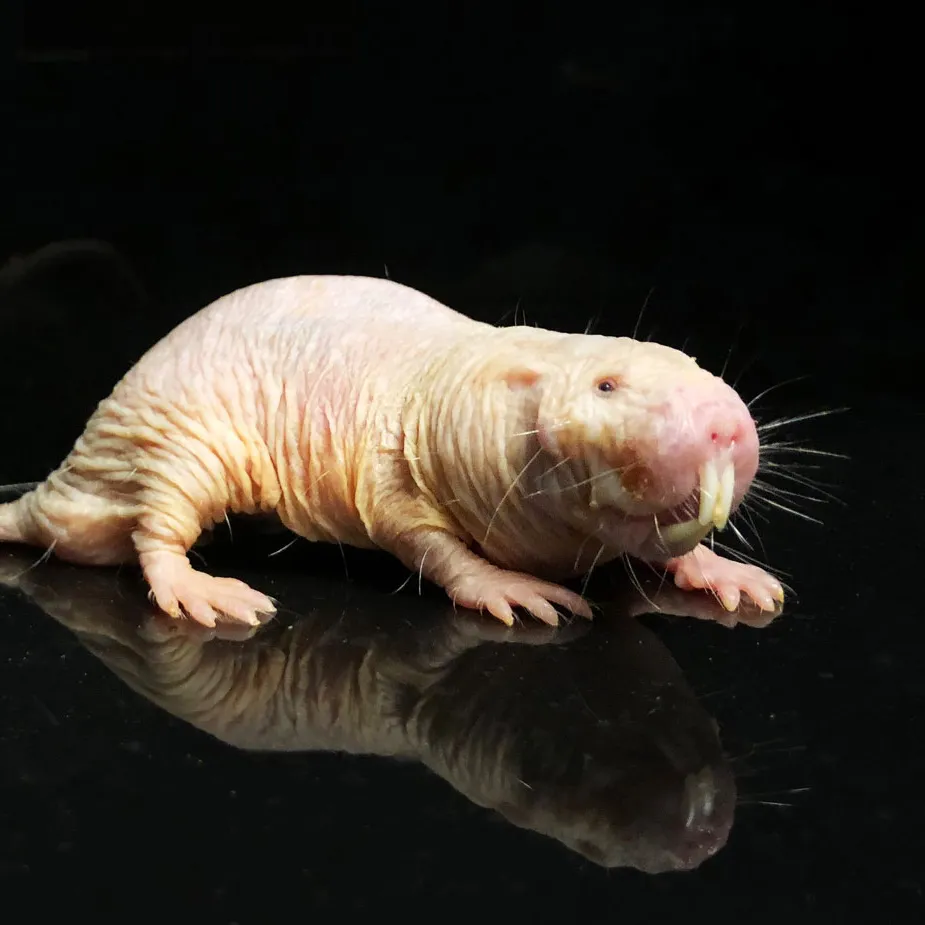Abstract
The naked mole-rat (Heterocephalus glaber) is a small, burrowing rodent native to parts of East Africa, renowned for its unusually long lifespan compared to other rodents, extreme resistance to cancer, and minimal age-related decline. Because of these remarkable traits, naked mole-rats have emerged as a preeminent model organism in aging research. This article provides an overview of the biological, physiological, and molecular features that contribute to the naked mole-rat’s longevity and discusses how these insights may guide future studies on human aging and age-related diseases.
1. Introduction
Most rodents the size of mice or rats live only a few years. In stark contrast, the naked mole-rat routinely lives over 30 years—more than eight times longer than a similarly sized mouse (Buffenstein, 2005; Ruby et al., 2018). Beyond mere lifespan, naked mole-rats display negligible senescence: they maintain high fertility, metabolic stability, and robust health at ages when other rodents would show significant functional decline. This exceptional longevity and health span have made the naked mole-rat a focal point for research aiming to uncover mechanisms of healthy aging and potential interventions for extending lifespan in other mammals, including humans (Buffenstein, 2008).
2. Key Biological and Physiological Features
2.1 Resistance to Cancer and Other Diseases
- Cancer Resistance: Naked mole-rats exhibit an extremely low incidence of spontaneous tumors. Studies indicate they possess unique mechanisms of contact inhibition, governed by high-molecular-mass hyaluronan (Tian et al., 2013), as well as enhanced tumor suppressor pathways (Seluanov et al., 2009).
- Metabolic Stability: They thrive in low-oxygen, high-CO₂ subterranean environments, showing adaptations that mitigate oxidative damage (Park et al., 2017). This metabolic resilience is tied to efficient DNA repair systems and superior protein homeostasis.
2.2 Maintenance of Protein Homeostasis (Proteostasis)
- Naked mole-rats sustain a remarkably stable proteome over time. They have been shown to preserve chaperone activity and proteasome function more effectively than shorter-lived rodents (Dorian et al., 2016). Efficient protein quality control reduces the accumulation of misfolded or aggregated proteins, which are commonly linked to neurodegenerative and other age-related diseases in mammals.
2.3 Enhanced Stress Resistance
- Oxidative Stress: While naked mole-rats do not necessarily exhibit lower baseline oxidative damage, they appear better able to tolerate oxidative stress and repair resultant damage (Perez et al., 2009).
- Hypoxia Tolerance: Their burrowing environment entails routine hypoxia and hypercapnia; they have evolved multiple metabolic adaptations for energy production under such stress, likely benefiting their overall resilience.
3. Molecular Mechanisms of Longevity
- Genomic Stability
Naked mole-rats show robust DNA repair capabilities, limiting the accumulation of mutations and chromosomal aberrations that drive aging in other species (MacRae et al., 2015). - Epigenetic Regulation
Recent research suggests that epigenetic modifications—such as DNA methylation patterns—are better preserved with age in naked mole-rats, contributing to sustained cellular function (Tan et al., 2017). - Autophagy and Proteostasis Maintenance
Autophagic pathways appear to be more active and efficient, complementing heightened proteasome function. Enhanced intracellular “housekeeping” reduces damage accumulation and preserves cellular homeostasis (Lewis et al., 2013).
4. Implications for Human Aging and Therapeutics
Naked mole-rats highlight specific strategies that may be translatable to humans:
- Cancer Resistance Pathways: Investigating high-molecular-mass hyaluronan and other mechanisms of tumor suppression could guide novel anticancer therapies.
- Stress Resistance: Decoding how naked mole-rats cope with oxidative and hypoxic stress may inspire interventions to boost tissue resilience in humans—e.g., strengthening mitochondrial function and stress response pathways.
- Proteostasis Enhancement: Pharmacologically targeting proteostasis (e.g., via mTOR inhibitors like rapamycin or small-molecule chaperone activators) is a major avenue for combating age-related diseases.
While caution is warranted—human physiology differs in many respects—naked mole-rats remain an invaluable model for illuminating fundamental processes underlying longevity.
5. Conclusions
The naked mole-rat exemplifies extraordinary longevity, disease resistance, and sustained physiological function, providing an unparalleled window into the biological underpinnings of healthy aging. Ongoing research continually reveals novel mechanisms of genomic stability, proteostasis, and stress resistance that not only challenge long-standing assumptions about aging but also open new directions for translational geroscience. By emulating certain protective traits of the naked mole-rat, it may one day be possible to develop therapies aimed at extending the human healthspan and delaying the onset of age-related disorders.
References
- Buffenstein, R. (2005). The Naked Mole-Rat: A New Long-Living Model for Human Aging Research. Journals of Gerontology Series A: Biological Sciences and Medical Sciences, 60(11), 1369–1377.
- Buffenstein, R. (2008). Negligible senescence in the longest living rodent, the naked mole-rat: Insights from a successfully aging species. Journal of Comparative Physiology B, 178(4), 439–445.
- Dorian, C.L., et al. (2016). Maintaining the proteome: The naked mole-rat’s strategies of successful aging. Experimental Gerontology, 81, 74–81.
- Lewis, K.N., Mele, J., Hayes, J.D., & Buffenstein, R. (2013). Nrf2, a Guardian of Healthspan and Gatekeeper of Species Longevity. Integrative and Comparative Biology, 53(6), 900–913.
- MacRae, S.L., et al. (2015). DNA repair in species with extreme lifespan differences. Aging Cell, 14(4), 603–612.
- Park, T.J., et al. (2017). Fructose-driven glycolysis supports anoxia resistance in the naked mole-rat. Science, 356(6335), 307–311.
- Perez, V.I., et al. (2009). Protein stability and resistance to oxidative stress are determinants of longevity in the longest-living rodent, the naked mole-rat. Proceedings of the National Academy of Sciences, 106(9), 3059–3064.
- Ruby, J.G., Smith, M., & Buffenstein, R. (2018). Naked mole-rat mortality rates defy Gompertzian laws by not increasing with age. eLife, 7, e31157.
- Seluanov, A., Hine, C., Bozzella, M., Hall, A., et al. (2009). Distinct tumor suppressor mechanisms evolve in rodent species that differ in size and lifespan. Aging Cell, 8(6), 765–774.
- Tan, L., et al. (2017). Naked mole rat induced pluripotent stem cells and their contribution to chimera. Stem Cell Reports, 8(3), 993–1005.
- Tian, X., et al. (2013). High-molecular-mass hyaluronan mediates the cancer resistance of the naked mole rat. Nature, 499(7458), 346–349.



